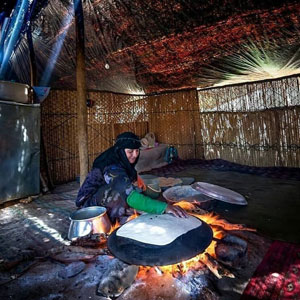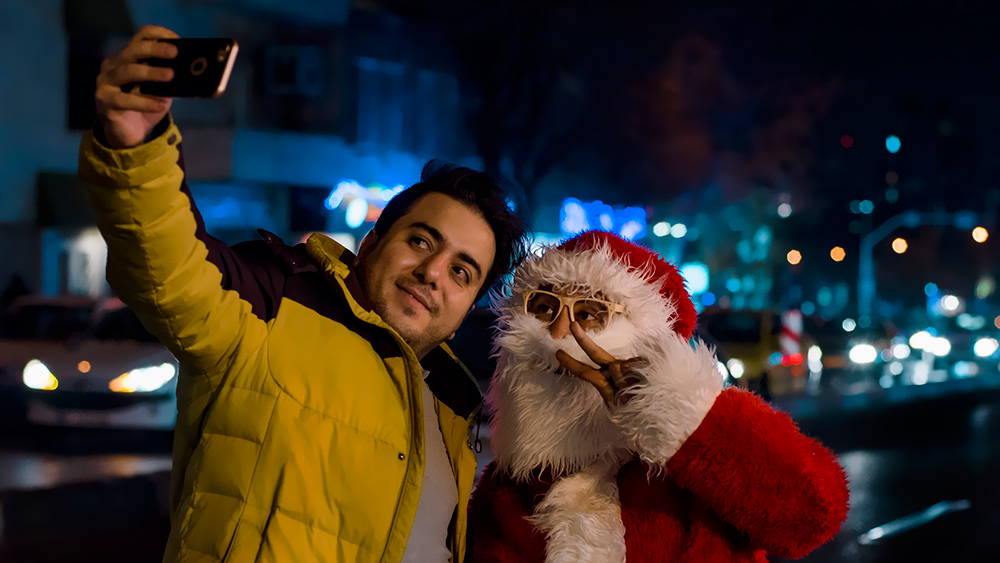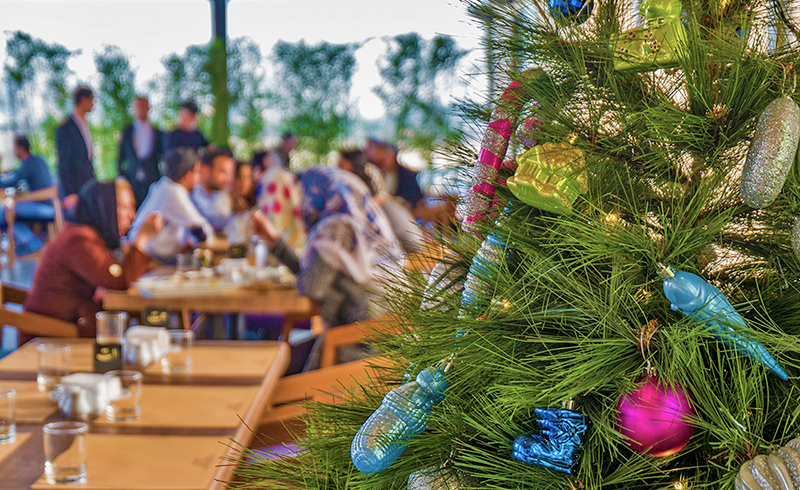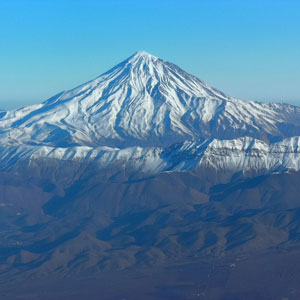 Signin with Google
Signin with Google Signin with Facebook
Signin with Facebook
 Activities,Culture
Activities,CultureHow People Celebrate Christmas Eve in Iran

In the midst of nature’s hibernation and the leaflessness of the trees, Christmas embellishes the cities in red, gold and green. It’s like a grandmother, all dressed up for her birthday. Glittering the cold winter atmosphere, Christmas brings about festivity and joy to everyone, even to the non-Christian population. In Iran, a country where around 97% of the population are Muslims, Christmas is celebrated by the Christian Community in a like manner. Irrespective of the geographical location, embellishing the trees with colourful bubbles and candy canes is probably the most fun part of Christmas.
December 25th is characterized by the birth of Jesus Christ among the Christian community all around the world, for it was he who has graced December 25th with the venerability title since the 17th century. Since then, the pine tree became a Christmas signature as its triangular shape resembled the “Trinity”. This four-season tree, perfectly matches the initial objective of its presence before, during and after Christmas, as the tree itself represents greenery and strength and its decorations symbolize prosperity.
In contrary to the general belief, the synthesis of Iran and Christianity dates back to ancient history. Possibly from the very beginning of the history of Iran, as Armenians are basically of Indo- European origin.
While the majority of Iran’s population identify Nowruz as their new year, Assyrian and Armenian Iranians who constitute Iran’s 300,000 to 370,000 Christian population, spend the last days of December preparing to celebrate the birthday of The Son of God. Being in the country’s minority doesn’t hold Iranian Christians back from celebrating their new year as a part of the global Christian population.
Assyrian and Armenian Christmas, however different in terms of date and commemoration, not only gathers friends and family together but also brings the holiday spirit to the cities, especially to Tehran, Isfahan, Tabriz, and Urmia.
Christmas Spirit in Tehran
Unlike other non-Christian countries where Christmas celebrations and city decorations are limited to big hotels hosting foreign travellers, in Iran, there’s no such limitation. Take Tehran for example! Decorated Christmas trees beautifying shopping malls and hotels around the city are only a small part of the New Christian Year celebration in Iran.

The real showcase of the Christmas celebration in Iran can be witnessed in the livelihood of Tehran’s Armenian neighbourhoods. Trees flaunt the red and green stripes of their dresses from behind shop windows. Greeting cards, posters of Armenian concerts, and images of the Virgin Mary, Joseph and Jesus Christ next to Christmas trees are the signature of shops on Mirza-ye-Shirazi street. The sweet smell of doughnuts coming from Lord Confectionery in Villa Street induces a Christmas mood for everyone. Khajeh Nezam’s fresh coffee aroma literally fills the air with the New Year sensation.

Iranian Assyrian Christmas Celebration
Assyrians whose exact date of arrival in Iran is not yet identified lived in this country for centuries. However, what we do know is that subsequent to the fall of an empire in Mesopotamia, Assyrians merged with the Iranian people and continued to live in Iran for years to come. Iran’s Western Azerbaijan has always been the home to the majority of Iran’s Assyrian population. Reportedly, Urmia City currently has a higher Assyrian population density. Assyrians are the first loyalists of Christianity as they were the very first people who turned to Christianity and are said to have been baptized in Urmia Lake, located in Iran’s current Western Azerbaijan.
Assyrians are firm believers in Christianity and believe that Jesus was born on the 25th of December, therefore they celebrate this day. “25” seems to be their number, as they start fasting 25 days prior to the birthday of Jesus, cutting out on meat and dairy products. December 25th coincides with the 4th of Dey in the Persian Calendar. Iranian Assyrians gather in a church, pay each other visits and open their fast through Eucharist and praying. Eucharist is a ceremony or sacrament commemorating the Last Supper, in which wine is consecrated and consumed.
On this day they also congratulate the Assyrian Clerics on the birth of Jesus Christ. On the following day, it’s the clerics who pay their coreligionists' visit. Despite all this, unlike the rest of the Christians who identify January 1st as the beginning of their New Year, Assyrians’ New Year officially starts on April 2nd.
Iranian Armenian Christmas Celebration
With the advent of Christianity, Armenians turned away from worshipping goddesses and Christianity became their official religion. Iran’s Azerbaijan region has long been an Armenian residence. The evidence of this fact is more than 187 Armenian churches and monasteries in this region including St. Thaddeus Monastery, St. Stepanos Monastery of Julfa, Maku‘s Dzordzor Chapel (Safavid), Dareh Sham Monastery (16th Century) and Mujumbar Church. Not to mention that 99% of Iran’s Christian population are Armenians who are Orthodox Christians.
Whereas most Christians including Protestants and Assyrians recognize December 25th as their Christmas day, on January 6th Armenians celebrate Epiphany and the baptism of Jesus. They do housecleaning and set up their Christmas tree 15 days earlier which they believe should be a natural tree. Little Noel holding onto his present boxes is a permanent guest during Christmas celebrations. There are even communities in which Santa Claus is a part of the celebration.
A week prior to the New Year, they fast and cut out on meat products. On December 31st they gather in a church, namely Isfahan’s Vank Cathedral. Standing in the church’s courtyard, as the bell announces the new Christian year they look up to the sky and pray. Armenians' new year church rituals include kneeling facing the apron, performing their religious duties in front of the priests, and attending Badarak (Holy Martyr) and Eucharist ceremonies through which Armenians open their fast by eating “Matzo” and singing Jesus Christ’s hymns. On January 1st, the last two rituals are repeated.
On the night of January 5th and the day of January 6th, special ceremonies are held in which water consecrated with the anointing oil, is divided among the attendees. The water is believed to have healing and consecration characteristics. Given Armenians' family-based New Year traditions, they either spend New Year’s night with their families or with someone who has recently lost a loved one. Tehran’s Ararat Armenian Club is a place where Armenians gather to not only celebrate but to attend charity bazaars held on the occasion of Christmas.
By Sara Kheirdoust / TasteIran



